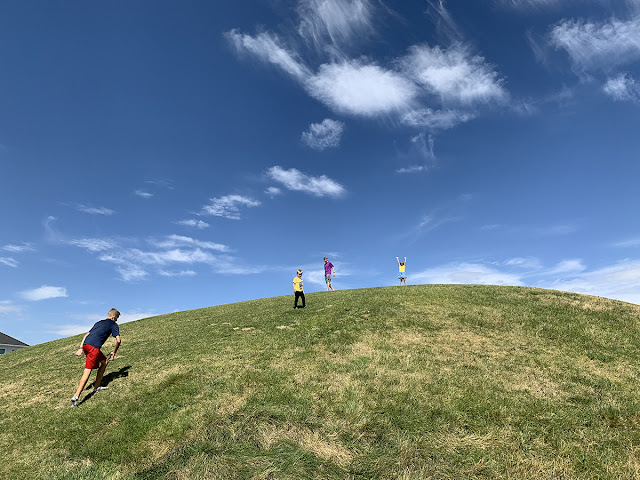We learned about volcanoes (briefly) and did the usual activities. Of course, my kids love volcanoes—who doesn't? We didn't go as in-depth as we sometimes have, but we covered all the basic types of volcanoes and how they are formed. (Above you see a cinder cone…made by blowing sugar into the air with a straw and letting it settle into a cone shape).
My very favorite thing was going to see this IMAX movie about volcanoes. If you ever get a chance to see it, make sure you take the chance! It was so cool! You feel like you are IN a volcano, or walking around one—which I have always wanted to do. And this wasn't even dangerous. :)
Vinegar and baking soda volcano
Rice crispie stratovolcano—alternating layers of cinders and pahoehoe lava (rice crispie mix) and liquid a'a lava (melted chocolate chips).
This must have been a very explosive eruption!







































































